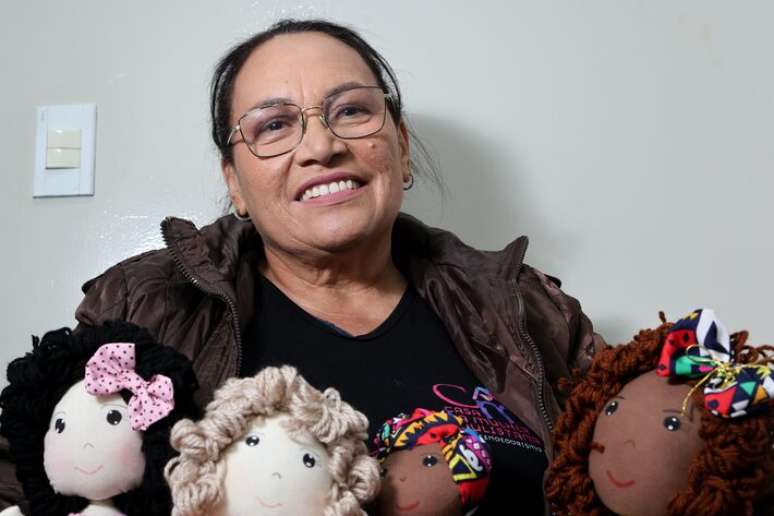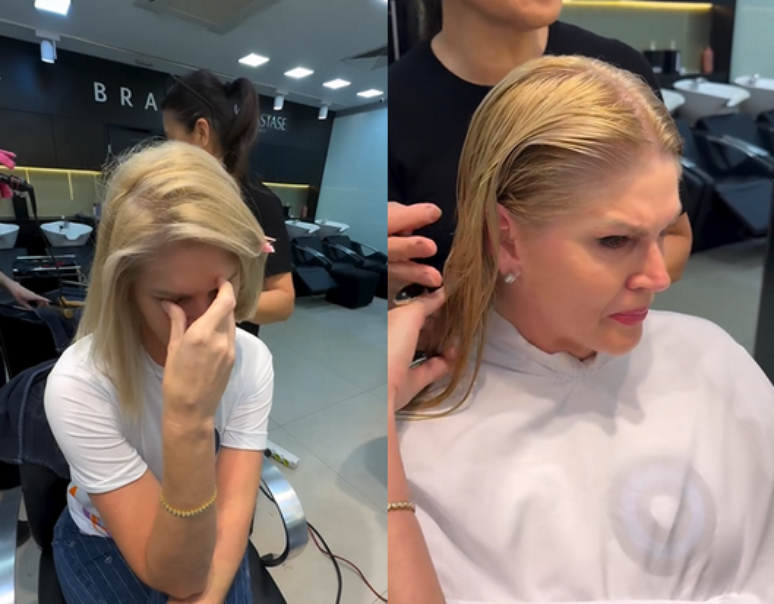Housewife Juliana Flores, 30, has been diagnosed with a rare disease called xeroderma pigmentosum.
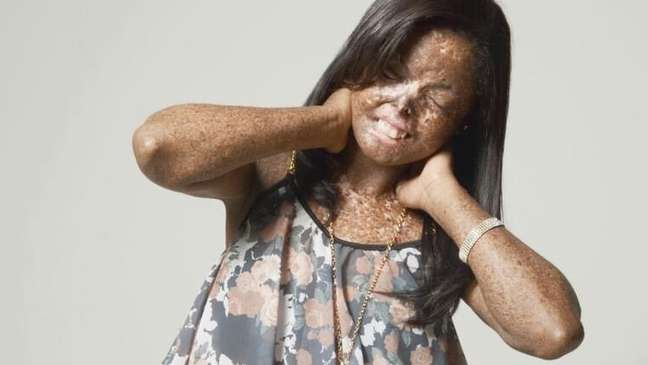
At the age of two, housewife Juliana Flores, who is currently 30, started showing spots on her body that looked like “burrs.”
At first, his family thought they were harmless, until the signs started spreading more and more.
The marks grew and skin cancers began to appear.
“It smelled very bad. They were like warts, only the size of a marble,” he reminds BBC News Brasil.
At the time, her mother didn’t really know what the problem could be and went to the doctors, who diagnosed her with xeroderma pigmentosum, a rare genetic disease. In addition to Juliana, her brother, who is three years younger than her, was also born with the condition.
The disease was attributed to the consanguineous marriage of his parents, who were first cousins. “I didn’t have that many connections. Being cousins, he’s strengthened,” she points out.
Over the years the spots have increased and, since she was a child, the young woman has needed to be attentive to the sun and daily activities. Due to her illness, she was late for school. “I started studying when I was seven and I was afraid of prejudice,” she says.
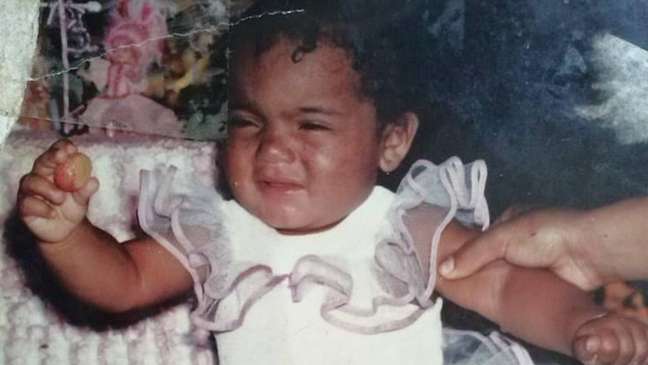
In her early years of high school, she suffered from bullying.
“There were kids who attacked me for being like this and formed a ring to beat me. But there were kids who stood up for me, who fought because of me. It was sad.”
the day for the night
Since the problem leaves her skin very vulnerable, Juliana says she needs to reverse her routine to be able to do some things. She sometimes sleeps during the day and tries to engage in street activities at night.
“The hardest thing is going out during the day, because I have photophobia in my eyes and light affects it a lot. But living at night and sleeping during the day is a bit complicated. I’m not very used to it,” she says.
When she needs to go to the doctor for appointments and perform surgeries, she goes out in the morning, but always with a cap, sunscreen, glasses and appropriate clothes. Living in the city of Iporá, Goiás, she says the place is very hot, which makes her days difficult.
While she has to avoid the sun, she says in some cases there’s no escaping the light and things around the house are done during the day.
hundreds of surgeries
Due to the disease, in addition to the spots on the skin, Juliana lives with the appearance of tumors often caused by xeroderma pigmentosum. She says she needs to have surgeries every three months and take biopsies to evaluate if any tumors are malignant.
In those 30 years, he says he performed at least 300 surgeries. “I have already removed tumors from various parts of the body. The tongue, the leg, the belly, the arm. When the result of the biopsy comes out and the tumor is malignant, I am admitted and I stay in the hospital for three or three four days,” he says .
In the early years of her life, she even underwent chemotherapy to treat the condition. “I cried because I wanted to go to school, but thank God I finished high school and was able to finish school,” she says.
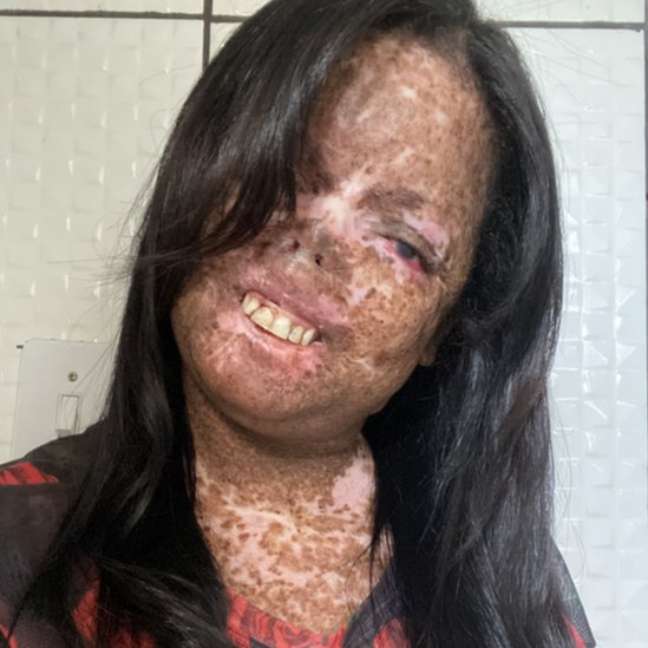
Due to numerous surgeries, she has already lost part of her lips, nose and also had problems with her right eye. “Today I only see in one eye. I removed the tumor from my eye, but it came back after a year and stuck to my eyeball. I’ll probably have to remove that too, because my eye is sagging,” she says.
To carry out all these procedures, Juliana undergoes treatment at the SUS (Sistema Único de Saúde) and receives sick pay, as she is unable to work due to the problem and has had some “odd jobs” throughout her life.
Although she has access to free medical care, she still has a lot of cosmetic expenses. “I live in rent and the treatments are very expensive. The sun cream I use costs 150 BRL and is 50 ml. When I have surgeries I have to buy drugs that cost, on average, 200 BRL”.
She also discovered, after the birth of her second child, that she had heart failure.
Self-esteem and awareness in social networks
Even as an adult, she still suffers from the stares and judgments of people. Juliana points out that she’s doing well with her body and she’s accepting it today, but she wasn’t always like that.
“It’s a daily struggle and it’s not easy to keep up and like each other, but I always get up. I think this body is borrowed and I’m here on a mission,” she says.
Faced with these adversities, the housewife came to suffer from prejudice even from those close to her.
To try to bring more information to people about the condition he suffers from, he decided to create a profile on TikTok and, through live shows, he did “crowdfunding” to raise funds and continue with the treatments. Before the internet exhibition, she asked for financial aid for the buses in the city where she lives.
Through the social network he was able to collect sums of money and even gifts from users. In addition, I have received positive feedback from other mothers who were also dealing with the diagnosis of xeroderma pigmentosum in their young children.
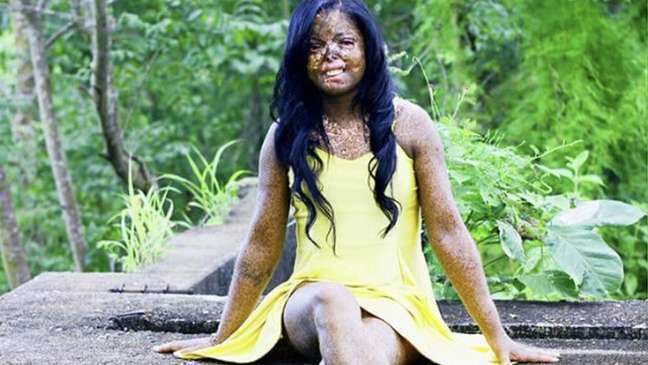
“Some people have said they don’t know a person with this disease. He says.
While having a positive effect, he still had to deal with biased messages and enemies who wanted to “cut down” the lives he did. “People denounced my profile for nonsense and called me the undead. It was pretty bad,” she says.
Despite this, she didn’t let herself be intimidated, she continued with the content and today her profile already has just over 500,000 followers. Her greatest wish is for more people to have access to information and early diagnosis.
What is xeroderma pigmentosum?
It is a rare genetic disorder that causes very small patches on the skin and can be pale and hypopigmented on the backs of the hands, feet, face and other regions where there is sun exposure. According to experts interviewed by the report, the prevalence in Brazil is approximately one person in 100,000. But remember, the condition is not contagious.
“The cell does not accept cellular aggression and cannot carry out DNA repair when it receives radiation,” explains Valéria Franzon, dermatologist and professor of medicine at the Pontifical Catholic University of Paraná (PUCPR).
Being an autosomal recessive disease, its cause is mainly linked to consanguineous marriages.
“This type of marriage increases the incidence of recessive diseases. DNA repair is defective,” explains the expert. Also according to the dermatologist, when the patient has the disease, the probability that the child will be born with the condition is 25%.
The first signs can appear in the first months of life and spread rapidly through the body over the years. Because of this, the patient begins to have manifestations of skin cancer in the first decade of life.
“The more sun exposure, the better the chances. It is most common on the face. The most common cancers are carcinomas that erode tissue and disfigure the patient. Over time, other types appear that can kill. Melanoma can also appear “., underlines João Duprat, leader of the Reference Center for Skin Cancers at the ACCamargo Cancer Center.
Some patients may also have a short life expectancy and only live to be 18 or 19.

Duprat also argues that it is a difficult disease to treat, as many patients have precarious socio-economic conditions, making access to health measures difficult. “They are people in need and there is a huge social problem. I think there should be services that treat this patient and with a multidisciplinary follow-up,” opines the doctor.
The disease can, in some cases, cause developmental delays and even blindness. “It is very common for patients to suffer from cataracts. The cornea itself becomes cloudy,” says specialist ACCamargo Cancer Center.
Signs that attract attention
- moles
- Spots
- skin roughness
- skin aging
- Occurrence of sores that do not heal and can progress to skin cancer
How does the treatment work?
The treatment is multidisciplinary and involves different cures. The main one is photoprotection.
“It is not exclusively the use of sunscreen. It must be done with a hat or cap, sunscreen, control the weather you will be exposed to the sun, umbrella and others. All this is important to avoid the appearance,” says Mauro Yoshiaki Enokihara, president of the Brazilian Society of Dermatology (SBD).
Early diagnosis is also important to prevent disease progression and improve the patient’s quality of life. Surgical procedures to remove tumors are also part of the line of therapy.
“Treatments of tumors such as carcinoma can be obtained through the SUS, but it is palliative, since no treatment is offered for the genetic change,” concludes the specialist from PUC Paraná.
🇧🇷The best content in your email for free. Choose your favorite Terra newsletter. Click here!
Source: Terra
Ben Stock is a lifestyle journalist and author at Gossipify. He writes about topics such as health, wellness, travel, food and home decor. He provides practical advice and inspiration to improve well-being, keeps readers up to date with latest lifestyle news and trends, known for his engaging writing style, in-depth analysis and unique perspectives.


